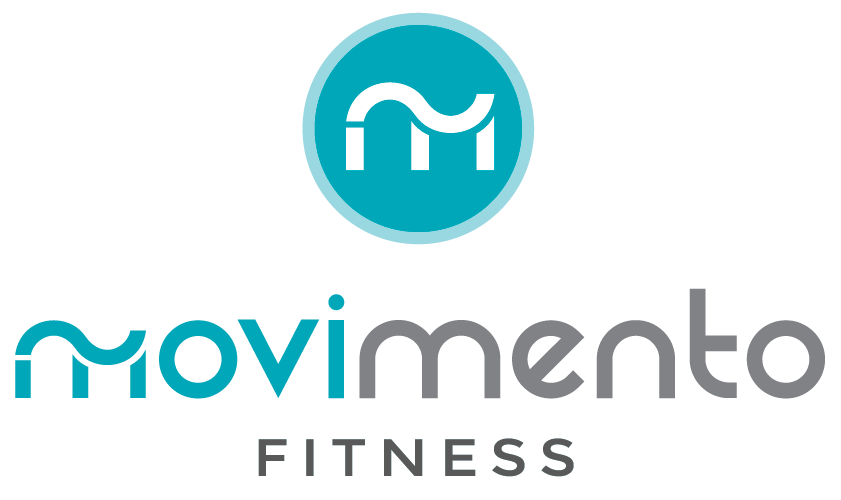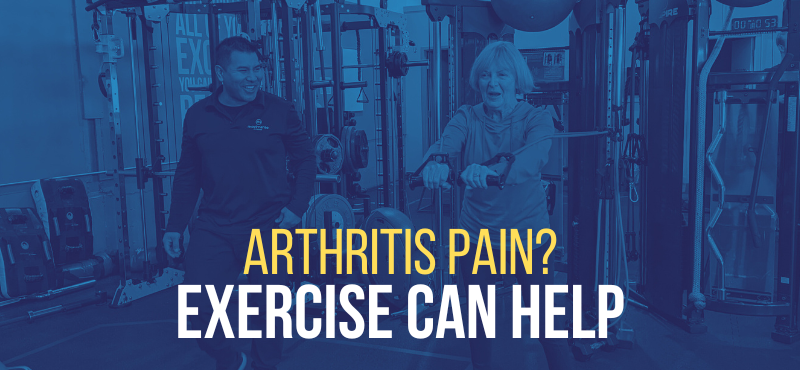A staggering 6 million Canadians have arthritis according to www.arthritis.ca. 1 in 4 Canadian women and 1 in 6 Canadian men have arthritis.
If you are living with Arthritis you may find yourself avoiding exercise for a number of reasons. Fear of making your arthritis worse, tiredness, or painful movement (especially when your arthritis affecting load-bearing joints such as your hips, knees, or spine) could be stopping you in your tracks. Unfortunately, this decline in movement can actually lead to worse symptoms down the line. Once you stop moving your body it can be hard to get moving again.
Although it might be difficult to stay active when living with arthritis, regular physical activity is actually crucial to help you manage your joint pain, improve mobility, relieve stiffness, improve energy, and make your everyday activities easier.
But first, before we get into how exercise can help, let’s take a deeper look into what this condition is and what it can do to the body…
What is arthritis?
Arthritis is a term used to describe a group of over 1000 diseases that cause inflammation in the joints or other areas of the body.
Arthritis can affect almost any part of the body. It most often affects weight-bearing joints such as hips, knees, and the spine but it can also be found in other non-weight bearing joints such as the fingers.
When left unchecked, this inflammation, and lead to significant permanent damage to the affected areas resulting in loss of function and disability.
Arthritis is a chronic condition, meaning there is no cure and it affects people on a constant or recurring basis.
The Two Broad Categories of Arthritis
Osteoarthrisis
This is the most common type of arthritis that affects more Canadians than all of the other types combined. Osteoarthritis is a result of the bodies failed attempt to repair damages joint tissues. This damage can be aging related deterioration or in response to an injury. Osteoarthritis leads to the breakdown of cartilage resulting in bone-on-bone contact. This can cause pain, stiffness, reduced movement/range of motion in the affected joints, and swelling.
Inflammatory Arthritis
With inflammatory forms of arthritis the joint damage comes from inflammation instead of a wearing away of cartilage. Most forms of inflammatory arthritis are autoimmune diseases where the immune system attaches the body’s health tissues. Inflammation from these conditions causes pain, stiffness, restricted mobility, fatigue, and damage to joints/other tissues. Often this type of arthritis progresses quicker and more aggressively that osteoarthritis.
Why Exercise is Important
1. Improved Muscle Strength: Building muscle strength through resistance training helps protect and support the joints affected by arthritis. The stronger your muscles are, the less pressure you put on your joints. This can reduce pain and stiffness and increase mobility.
2. Enhanced Joint Stability: Strength training exercises that target the muscles around the affected joints can improve stability and reduce the risk of joint instability or subluxations (partial dislocation of a joint). This added stability can provide better joint alignment and reduce the likelihood of injury. When a joint and its surrounding muscles are affected by arthritis, or if a joint has been replaced, it often impairs coordination, positional awareness, balance, and can create an increased risk of falling. Increasing your joint stability is crucial.
3. Improved Bone Health: Strength training also contributes to improved bone health, which is particularly important for individuals with arthritis. Weight-bearing exercises can help increase bone density and reduce the risk of osteoporosis, which is often associated with arthritis.
4. Weight Management: Exercise can help with managing your weight which can help in reducing pain and the load on the affected joints for some people. Also, excess fat tissue releases high levels of cytokines — proteins that can cause inflammation throughout your body. Cytokines make existing joint inflammation worse.
5. Increased Energy: Exercise increases your energy to help combat the fatigue that is often a symptom of arthritis. In addition exercise can improve your sleep so that you are recharging well overnight and have more energy during the day.
6. Reduced inflammation: Exercise reduces inflammation throughout the whole body meaning less pain.
7. Hormone Release: Exercise releases endorphin hormones, which reduce stress and pain. It also stimulates the release of hormones such as serotonin and dopamine that increase feelings of happiness and wellbeing.
8. Improved Quality of Life: Exercising will improve your quality of life today, yes, but even more importantly years down the road. Maintaining your mobility and your independence in your 60’s, 70’s, 80’s, and even 90’s starts with the actions you take today.
What Type of Exercise Should I Do?
Strength Training
Strength training should from the base of your exercise program. Strength training (also called resistance training) will be the form of exercise that builds your muscle to support your joints, enhances your joint stability and improves your bone health. A customized strength training program will also target the muscles that are weaker to improve posture and correct muscle imbalances, therefore reducing stress on your joints. Strength training is best done 2-3 days per week.
Cardiovascular Exercise
Cardiovascular exercise improves your heart health, gives you more stamina and energy, and can help maintain a healthy weight. It is important to keep your cardio exercises low-impact as higher-impact activities such as running can cause your joints further pain. Examples include walking or cycling, getting into the water for swimming or water aerobics (water is a great way to remove impact from your joints!), or using equipment designed to be low-impact such as an elliptical or stationary recumbent bike. Work up to doing at least 30 minutes of cardio every other day or everyday if you can.
Mobility and Stretching
It can be a good idea to include some gentle stretching and mobility exercises into your everyday routine. This will help to relax tight muscles and improve your range of motion.
Here are some stretches you can get started with right at home:
When You Are Exercising Consider These Tips:
- Go slow! Especially if this is your first time exercising for a while, start off slow so you do not injure yourself. If you try to jump into things too quickly, your movements may hurt and cause you further damage.
- Get help from a fitness professional. It’s important to get help from trainers that can create custom programs that work for your needs and keep you safe. Our coaching team here at Movimento specializes in working with members over 50 and are experienced in designing programs that work for your arthritic body. It is so valuable to have a professional by your side that can show you how to properly perform exercises, safely use equipment, and modify your program if it is causing you pain. You want to feel the positive effects of exercise but not injure yourself and cause further damage to your joints.
- Take time to warm up. Your body and joints need time to warm up and ease into your workout. If you are joining us here at Movimento make sure to arrive with enough time to do your full 15 minute warm-up so that you are prepared to get the most out of your training.
- Time your exercise. You know your body best, so choose times to exercise that works best for you. Find you are always very stiff and in pain in the mornings? Then maybe afternoon workouts are best for you.
- Listen to your body. If your joints are inflamed or you are having pain you may need an extra day of recovery. Listen to your body, and take time to rest, but don’t give up. Consistency with your exercise (even if you are going very light and/or slow) is the key to maintaining a life with less pain and stiffness.
Want help getting started?
We’re here for you! Many of our current clients live with Arthritis and are managing their symptoms though training with us. Our Stronger For Longer 6 Week new member program is a great way to dip your toes in the water and see how we can help you.
When you register we start with an assessment where we get to know you and learn more about your Arthritis and any other concerns that you have. From there we create a completely customized exercise program and you will join us to exercise 2x or 3x per week in our St.Albert studio. Our experienced coaches lead you through every workout with individual attention to make sure you are safely and effectively exercising. Plus, we throw in our 6 week nutrition guide to help you with general healthy eating to support your wellness journey. Click the button to learn more:



